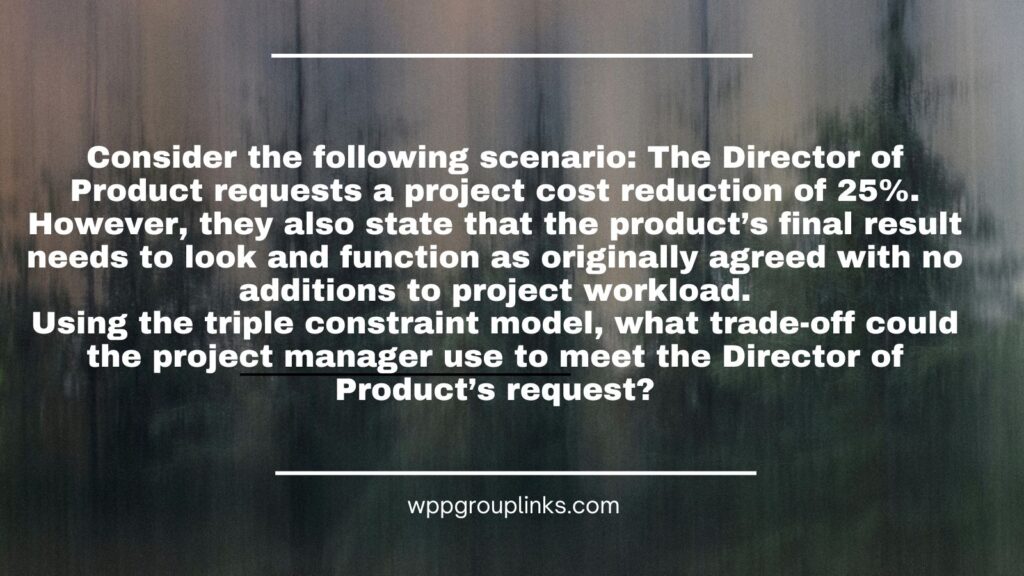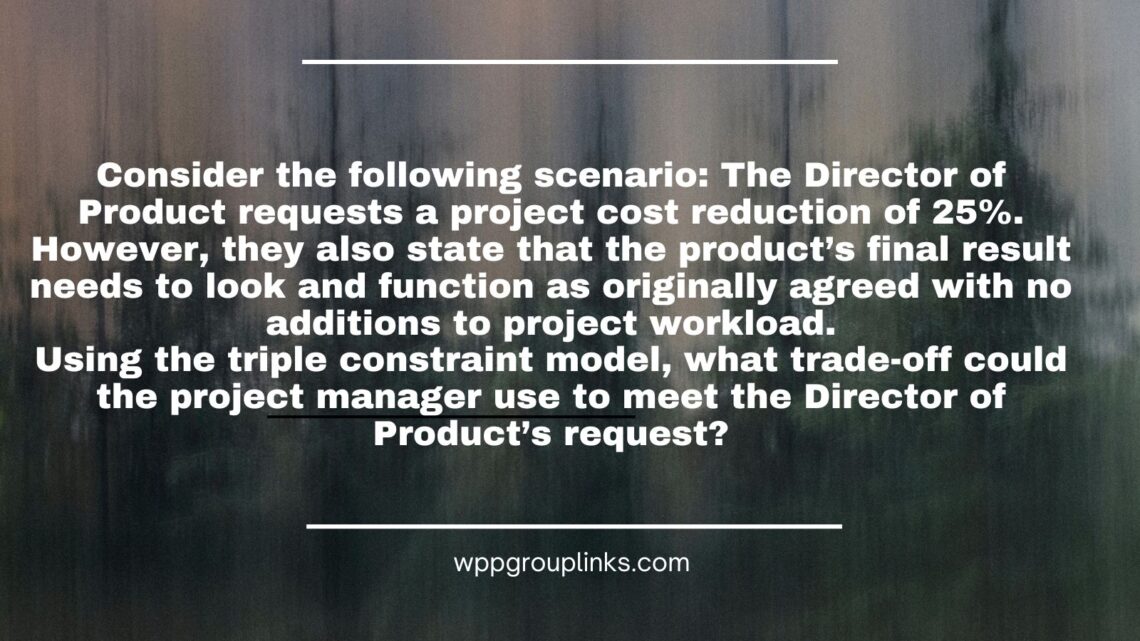
Q: Consider the following scenario: The Director of Product requests a project cost reduction of 25%. However, they also state that the product’s final result needs to look and function as originally agreed with no additions to project workload.
Using the triple constraint model, what trade-off could the project manager use to meet the Director of Product’s request?
or
Q: Think about the following situation: A 25% decrease in project costs is what the director of products is requesting. They do, however, stress that the finished product must have the same appearance and functionality as initially agreed upon and not add to the project’s effort.
What compromise may the project manager make in order to accommodate the Director of Product’s request using the triple constraint model?
- Change the timeline
- Change the project goal
- Change the team
- Change the project scope
Explanation: Time, money, and scope are the three most important aspects that have to be considered in the triple constraint model. Because the Director of Product is demanding a reduction in project costs of twenty-five percent without affecting the final look or functioning of the product, the project manager can take into consideration modifying the scope to achieve the desired reduction in pricing.
The trade-off in this case entails lowering the price of the project (the cost constraint) by maybe eliminating or modifying specific features, functions, or deliverables that are included within the scope that was initially agreed upon (the scope constraint). When the project manager takes this course of action, they are able to fulfill the request for a decrease in costs without sacrificing the overall look or functioning of the finished product. Nevertheless, it is of the utmost importance to communicate any modifications to the stakeholders and to make certain that the updated scope continues to correspond with the overall aims and objectives of the project being undertaken.





